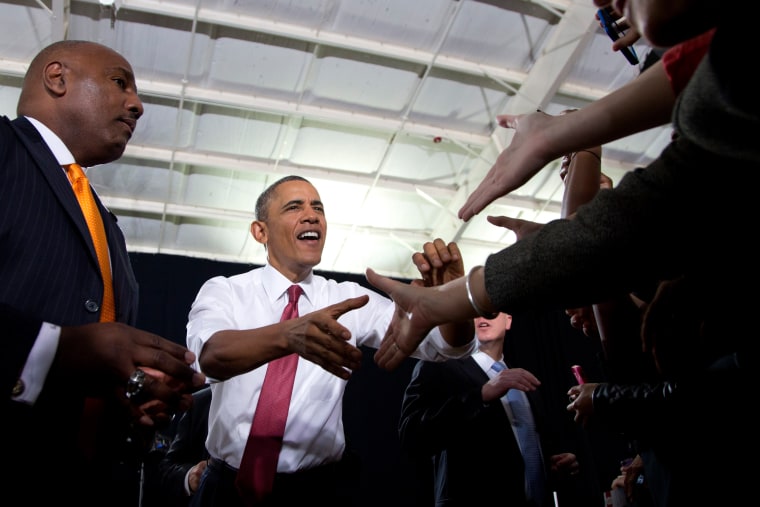Manufacturing growth has been one of the "bright spots" in the sluggish economic recovery, helping boost exports and corporate profits.
For millions of jobless factory workers, however, the outlook is not as bright.
President Barack Obama traveled to North Carolina on Wednesday to highlight the importance of manufacturing to the economic recovery, renewing his calls for a "public private partnership" to spur further job growth. The announcement at North Carolina State of the first of three "manufacturing innovation institutes" echoed past pledges in the last two State of the Union speeches. The president is scheduled to deliver his latest on Jan. 28.
"The challenge of making sure that everyone who works hard can get ahead in today's economy is so important we can't wait for Congress to solve it," he said. "Where I can act on my own without Congress, I'm going to do so."
The battleground state of North Carolina, for decades a hub of textile and furniture manufacturing, has moved sharply to the right in the last two elections under a Republican governor and a Republican-controlled state assembly.
As in those elections, voters remain focused on the weak job market during the sluggish recovery. Despite gradual improvement, North Carolina's jobless rate has been higher than average. Unemployment peaked at 11.3 percent shortly after the recession ended, and has since fallen to 7.4 percent, as of November, some four-tenths of 1 percent higher than the national rate at that time.
With Congress sitting on its hands, the White House has won little support for legislative initiatives to help create jobs for the 5 million U.S. factory workers sidelined since the Great Recession. Many are among the 1.5 million people who had been relying on extended unemployment insurance. Since those benefits expired in late December, Congress has been bickering over whether to restore them.
The announcement Wednesday in North Carolina will do little to boost the painfully slow progress in restoring paychecks for low-skilled factory workers. But the initiative is designed to advance America's competitive edge in high-tech manufacturing, where new jobs that are created pay higher salaries.
"It may not create a lot of jobs, but you want to create high-paying jobs," said Paul Ashworth, an economist at Capital Economics. "You don't want compete with the Chinese at what they're strong at—which is labor intensive manufacturing. You want to compete at the top end."
The disappearance of low-skilled factory work in the U.S. long predates the Great Recession. Manufacturing employment peaked in June 1979—at 19.6 million jobs—and has been shrinking ever since. The drop accelerated in the 2000s as waves of jobs moved offshore to China and other low-wage markets, before bottoming in early 2010 at 11.5 million.
"A lot of those jobs are just gone," said Ashworth. "You're not going to get them back."
Many of those displaced manufacturing workers have found paychecks in other areas of the economy where growth of low-skilled jobs has been strongest, including retail, health care and other service jobs. That trend is expected to continue. Even as manufacturing has rebounded from the recession, it continues to decline as a share of overall gross domestic product.
But some of those displaced factory workers remain on the sidelines, and some have given up looking for those job jobs that aren't coming back.
Though the overall jobless rate has fallen steadily under Obama's watch, the improvement has been largely a matter of statistics—the result of nearly 7 million Americans giving up on finding a job. As those unemployed people leave the workforce, they are no longer counted as "unemployed."
If they were added back to the "official" tally of the workforce, the jobless rate today would be just over 11 percent roughly where it was when the Great Recession ended.
Those "missing" workers represent a continued drag on the economy—they spend less and are no longer adding to the nation's productive output. Without additional efforts to return them to work, the recovery will remain one of the weakest on record.
